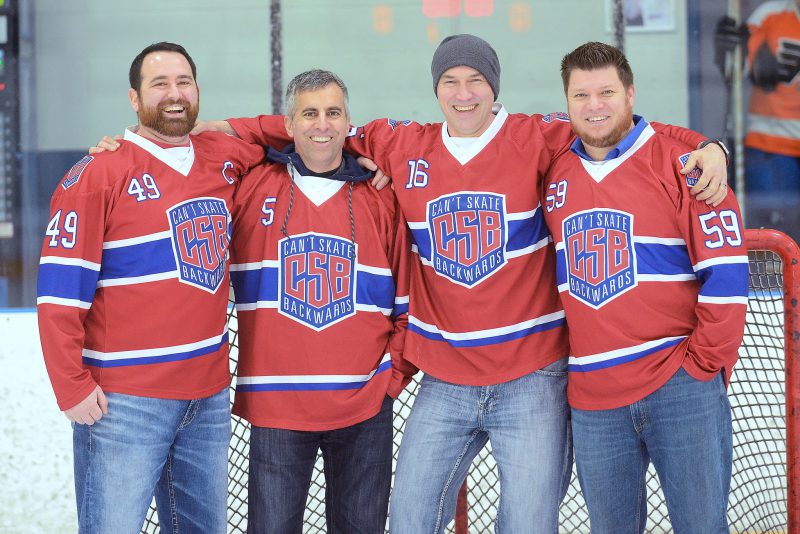
Tom Levesque, Ken Carrusca, Jay Howell, and Wes Reamsbottom – teammates on “Can’t Skate Backwards” at Burnaby 8-Rinks. Photo by Cornelia Naylor, Burnaby Now
As he lay on the ice, unresponsive, Ken was fortunate that others came to his aid immediately. He had just suffered a cardiac arrest, one of an estimated 40,000 to occur outside of a hospital setting in Canada each year.
“Several people on the ice started CPR and used one of the AEDs (automated external defibrillator) to re-start my heart,” says Ken.
That quick response helped keep Ken alive as he was transported to Royal Columbian Hospital. There, an angiogram detected blockages in his arteries and led to a quadruple bypass surgery.
“Bystander CPR is critical,” notes Dr. Gerald Simkus, an interventional cardiologist at Royal Columbian Hospital who is also the medical director for cardiac sciences in the Fraser Health region. “Early defibrillation really boosts survival as well.”
Survival rates from out-of-hospital cardiac arrests are as low as 10-15 percent, but early CPR doubles the chances of survival. Bystander-administered defibrillation improves the odds even more.
“The statistics really aren’t that good unless you do have somebody right away to do CPR, somebody to use an AED,” says a grateful Ken.
As BC’s busiest cardiac care centre, Royal Columbian provides emergency cardiac care to a region that includes a third of British Columbians. The hospital treats just about as many heart emergencies as all other cardiac centres in BC combined.
Less than three weeks after Ken arrived in hospital, two other hockey players ended up at Royal Columbian and also survived cardiac arrests.
49-year-old Rob MacDonald arrested at the end of a game in Pitt Meadows three days after Ken had collapsed. Two weeks later, 43-year-old Jamie Maclaren’s heart stopped following a game in Burnaby.
Both were fortunate to have quick-thinking bystanders who performed CPR and defibrillation to help save their lives until they could be brought to hospital to receive emergency angioplasties.
Royal Columbian has among the best survival rates in Canada following angioplasty, which involves the use of catheters, balloons and stents to open blocked heart arteries during a minimally-invasive procedure. The hospital’s remarkable results stand out while also having the highest percentage of high-risk cases in the country.
“If you can get to the hospital alive, your chances of leaving hospital alive after a cardiac arrest are quite good,” says Dr. Simkus.
Ten months after his cardiac arrest, Ken stepped back onto the ice to play again with his recreational hockey team.
“It was quite an emotional day when I went back to the rink to play my first game back with the teammates that saved my life,” he says. “While it’s fun to be back on the ice, most importantly I’m so appreciative that many of my mates had CPR and AED training and took such quick action. Without them, my skates would have been hung up for good.”
